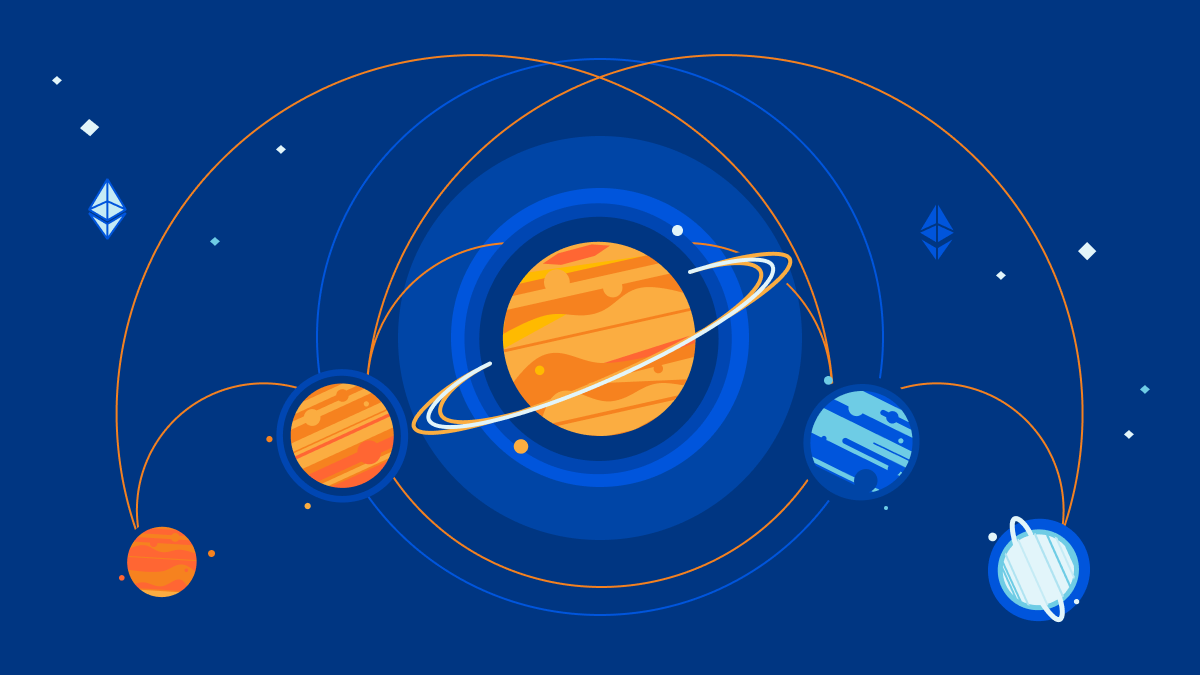Seeking Service Mesh Sessions at VMworld
It’s that time of the year again, when all of VMware’s customers and the vCommunity at large assemble for the annual gathering of learning and shared knowledge that we call VMworld.
This year, like last year, VMworld will be held in a virtual format and, just like last year, it’s completely free! Last year’s VMworld was a big success, with many great sessions and a record number of attendees who joined from around the world.
As for Tanzu Service Mesh, I have good news for all you service mesh enthusiasts — and for those who are just starting to learn about service mesh. This year will see an exponential increase in the number of sessions that cover Tanzu Service Mesh. —
Service Mesh Sessions You Won’t Want to Miss:
- Solutions Keynote: DevSecOps Your Way to Any Cloud (And Delight Customers) [V13190]
This session, led by Ajay Patel, SVP and GM of the Modern Apps and Management Business Unit, will review VMware solutions that enable a DevSecOps practice for our customers — and that includes Tanzu Service Mesh. Pratik Roychowdhury a Tanzu Service Mesh director of product management, will talk about how Tanzu Service Mesh provides a way to observe and control API calls exchanged between micro-services. Pratik will also describe our PII Data Leakage protection Continue reading
Cloud PCs: From DIY to SaaS
A SaaS approach to DaaS can deliver maximum uptime at a fraction of the cost of DIY cloud desktops.How to Utilize Automation to Revolutionize Modern Networks
At VMworld 2021, we’re imagining what’s possible when it comes to the public cloud experience everywhere. IT enterprises are expected to keep up with increasing consumer demands, focusing on fast application roll out across multiple clouds. There’s an industry wide emphasis being placed on delivering immediate, secure, and strong end-user network experience to get the job done right. At this year’s conference, we’re looking at real customers and their experiences when it comes to optimizing automation in modern network environments.
Dankse Bank, a leader in the financial industry, learned what was necessary to achieve the most simplified self-service functionality possible. By starting with Day 0 deployment and all the way to Day 2 delivery, Dankse Bank secured sustainable service delivery and self-service modifications. VMworld 2021 session Network Operations: Intelligence and Automation from Day 0 to Day 2 takes a deeper look at this customer’s intelligence journey to show how you can achieve simplification within the public cloud, too.
Simplifying Day 0 and Day 2 ops are action steps IT can take to streamline business ops but understanding the modern enterprise – and the complexities involved – is evergreen. Learning the ins-and-outs of the modern network with end-to-end virtualization allows businesses like yours to succeed in even the most diverse environments. Tom Gillis, Business Group leader, NASBG, of VMware, takes us on a deep dive of why building out a better security posture within diverse infrastructure is crucial. You Continue reading
Chip Shortages Aren’t Sweet for Networking

Have you tried to order networking gear recently? You’re probably cursing because the lead times on most everything are getting long. It’s not uncommon to see lead times on wireless access points or switch gear reaching 180 days or more. Reports from the Internet say that some people are still waiting to get things they ordered this spring. The prospect of rapid delivery of equipment is fading like the summer sun.
Why are we here? What happened? And can we do anything about it?
Fewer Chips, More Air
The pandemic has obviously had the biggest impact for a number of reasons. When a fabrication facility shuts down it doesn’t just ramp back up. Even when all the workers are healthy and the city where it is located is open for business it takes weeks to bring everything back online to full capacity. Just like any manufacturing facility you can’t just snap your fingers and get back to churning out the widgets.
The pandemic has also strained supply chains around the world. Even if the fabs had stayed open this entire time you’d be looking at a shortage of materials to make the equipment. Global supply chains were running extremely lean Continue reading
FRnOG #34: how we deployed a datacenter in one click
Here are the slides I presented for FRnOG #34 in October 2021. They are about automating the deployment of Blade’s datacenters using Jerikan and Ansible. For more information, have a look at “Jerikan+Ansible: a configuration management system for network.”
The presentation, in French, was recorded. I have added English subtitles.1
-
Good thing if you don’t understand French as my diction was poor with a lot of fillers. ↩︎
Announcing The Cloudflare Distributed Web Gateways Private Beta: Unlocking the Web3 Metaverse and Decentralized Finance for Everyone


It’s cliché to say that the Internet has undergone massive changes in the last five years. New technologies like distributed ledgers, NFTs, and cross-platform metaverses have become all the rage. Unless you happen to hang out with the Web3 community in Hong Kong, San Francisco, and London, these technologies have a high barrier to entry for the average developer. You have to understand how to run distributed nodes, set up esoteric developer environments, and keep up with the latest chains just to get your app to run. That stops today. Today you can sign up for the private beta of our Web3 product suite starting with our Ethereum and IPFS gateway.

Before we go any further, a brief introduction to blockchain (Ethereum in our example) and the InterPlanetary FileSystem (IPFS). In a Web3 setting, you can think of Ethereum as the compute layer, and IPFS as the storage layer. By leveraging decentralised ledger technology, Ethereum provides verifiable decentralised computation. Publicly available binaries, called "smart contracts", can be instantiated by users to perform operations on an immutable set of records. This set of records is the state of the blockchain. It has to be maintained by every node on the Continue reading
Get started Building Web3 Apps with Cloudflare


For many developers, the term Web3 feels like a buzzword — it's the sort of thing you see on a popular "Things you need to learn in 2021" tweet. As a software developer, I've spent years feeling the same way. In the last few months, I’ve taken a closer look at the Web3 ecosystem, to better understand how it works, and why it matters.
Web3 can generally be described as a decentralized evolution of the Internet. Instead of a few providers acting as the mediators of how your interactions and daily life on the web should work, a Web3-based future would liberate your data from proprietary databases and operate without centralization via the incentive structure inherent in blockchains.
The Web3 space in 2021 looks and feels much different from what it did a few years ago. Blockchains like Ethereum are handling incredible amounts of traffic with relative ease — although some improvements are needed — and newer blockchains like Solana have entered the space as genuine alternatives that could alleviate some of the scaling issues we've seen in the past few years.
Cloudflare is incredibly well-suited to empower developers to build the future with Web3. The announcement of Continue reading
Web3 — A vision for a decentralized web


By reading this, you are a participant of the web. It's amazing that we can write this blog and have it appear to you without operating a server or writing a line of code. In general, the web of today empowers us to participate more than we could at any point in the past.
Last year, we mentioned the next phase of the Internet would be always on, always secure, always private. Today, we dig into a similar trend for the web, referred to as Web3. In this blog we'll start to explain Web3 in the context of the web's evolution, and how Cloudflare might help to support it.
Going from Web 1.0 to Web 2.0
When Sir Tim Berners-Lee wrote his seminal 1989 document “Information Management: A Proposal”, he outlined a vision of the “web” as a network of information systems interconnected via hypertext links. It is often assimilated to the Internet, which is the computer network it operates on. Key practical requirements for this web included being able to access the network in a decentralized manner through remote machines and allowing systems to be linked together without requiring any central control or coordination.

Video: Public Cloud Networking Is Different
Even though you need plenty of traditional networking constructs to deploy a complex application stack in a public cloud (packet filters, firewalls, load balancers, VPN, BGP…), once you start digging deep into the bowels of public cloud virtual networking, you’ll find out it’s significantly different from the traditional Ethernet+IP implementations common in enterprise data centers.
For an overview of the differences watch the Public Cloud Networking Is Different video (part of Introduction to Cloud Computing webinar), for more details start with AWS Networking 101 and Azure Networking 101 blog posts, and continue with corresponding cloud networking webinars.
Video: Public Cloud Networking Is Different
Even though you need plenty of traditional networking constructs to deploy a complex application stack in a public cloud (packet filters, firewalls, load balancers, VPN, BGP…), once you start digging deep into the bowels of public cloud virtual networking, you’ll find out it’s significantly different from the traditional Ethernet+IP implementations common in enterprise data centers.
For an overview of the differences watch the Public Cloud Networking Is Different video (part of Introduction to Cloud Computing webinar), for more details start with AWS Networking 101 and Azure Networking 101 blog posts, and continue with corresponding cloud networking webinars.
May I ask who’s calling, please? A recent rise in VoIP DDoS attacks


Over the past month, multiple Voice over Internet Protocol (VoIP) providers have been targeted by Distributed Denial of Service (DDoS) attacks from entities claiming to be REvil. The multi-vector attacks combined both L7 attacks targeting critical HTTP websites and API endpoints, as well as L3/4 attacks targeting VoIP server infrastructure. In some cases, these attacks resulted in significant impact to the targets’ VoIP services and website/API availability.
Cloudflare’s network is able to effectively protect and accelerate voice and video infrastructure because of our global reach, sophisticated traffic filtering suite, and unique perspective on attack patterns and threat intelligence.
If you or your organization have been targeted by DDoS attacks, ransom attacks and/or extortion attempts, seek immediate help to protect your Internet properties. We recommend not paying the ransom, and to report it to your local law enforcement agencies.
Voice (and video, emojis, conferences, cat memes and remote classrooms) over IP
Voice over IP (VoIP) is a term that's used to describe a group of technologies that allow for communication of multimedia over the Internet. This technology enables your FaceTime call with your friends, your virtual classroom lessons over Zoom and even some “normal” calls you make from your cell phone.
IT Talent Shortage Hobbles Emerging Tech Adoption
The lack of skilled IT workers is hurting the deployment of emerging technology, according to a new survey from Gartner. In areas from cloud to cybersecurity, this crisis is expected to last for years to come.Symbexcel: Bringing the Power of Symbolic Execution to the Fight Against Malicious Excel 4 Macros
Office macros are a popular attack vector to compromise a user’s environment and deploy additional components. That’s because macros can hide within documents, often under several layers of obfuscation. In recent years, there has been an increase in attacks that leverage Excel 4.0 macros as threat actors have realized the power that this legacy functionality provides to an attacker.
Analyzing Excel 4.0 macros can be a daunting task, because the analysis often requires manual, step-by-step execution of the code to extract behaviors and IoCs such as the URLs from which additional malware components will be downloaded.
In this blog, we present Symbexcel, a novel solution based on symbolic execution for the automated de-obfuscation and analysis of Excel 4.0 macros. Our approach was recently presented at BlackHat 2021 [1].
What Are Excel 4.0 Macros?
Excel 4.0 macros, or XLM macros, are a 30-year-old feature of Microsoft Excel that allows one to encode a series of operations into the contents of spreadsheet cells. Distinct from the traditional functions provided by an Excel spreadsheet (such as SUM), Excel 4.0 macro functions have access to the Windows API and can be used to interact with the underlying operating Continue reading
Briefings In Brief 102: ZPE Systems Melds Universal CPE With Out-Of-Band Management
ZPE Systems presented at a recent Network Field Day. Founded in 2013, ZPE Systems focuses on two markets: providing out-of-band management for infrastructure, and providing universal CPE for remote and edge locations. The uCPE gear can run third-party VNFs, including firewalling and SD-WAN functions from your favorite vendors.
The post Briefings In Brief 102: ZPE Systems Melds Universal CPE With Out-Of-Band Management appeared first on Packet Pushers.